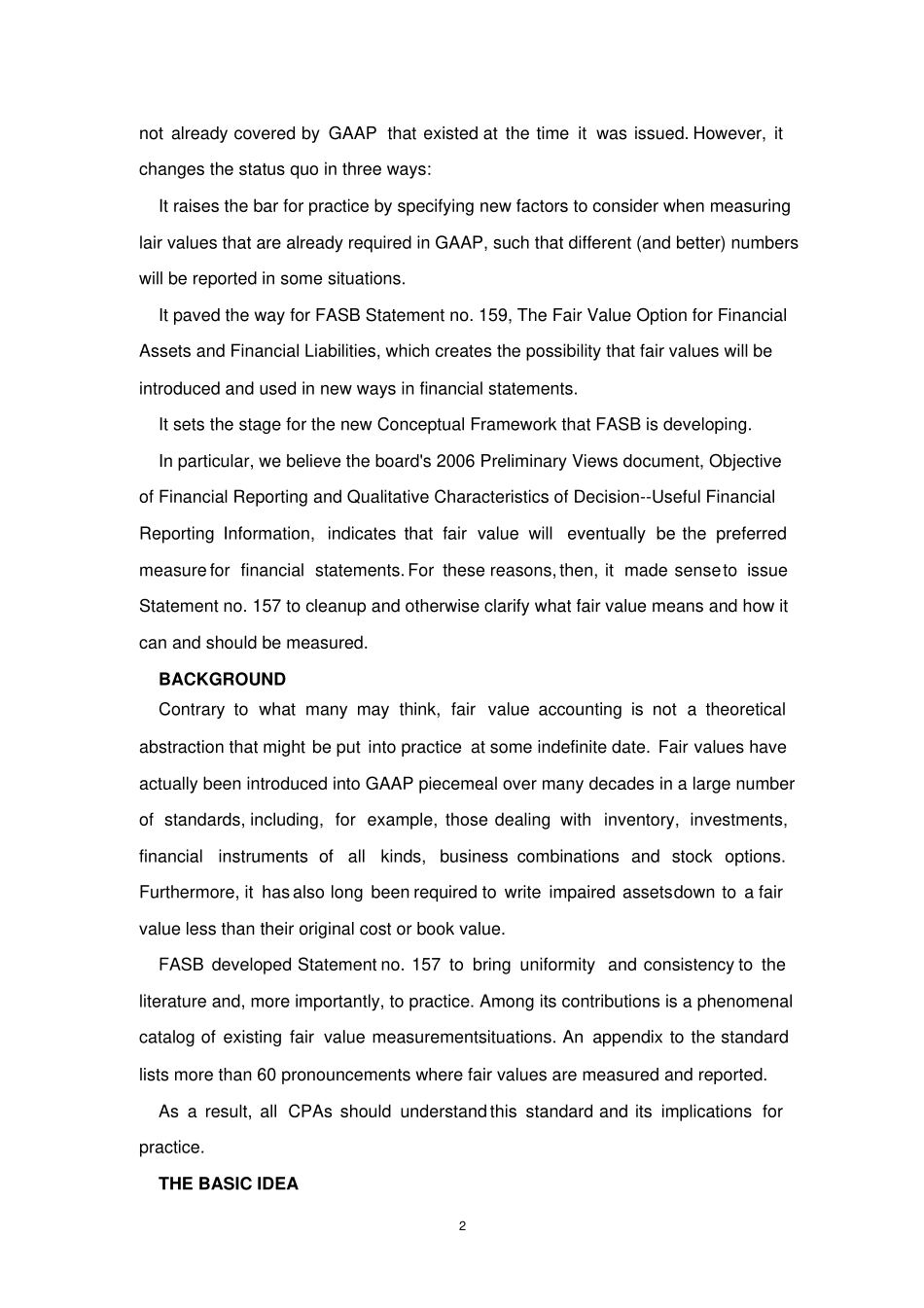1 本科毕业论文(设计)外文翻译外文出处 Jouurnal of Accountancy 外文作者 Paul R.Bahnson 原文:Refining Fair Value MeasurementFASB Statement no. 157 defines fair value as "the price that would be received to sell an asset or paid to transfer a liability in an orderly transaction between market participants at the measurement date." The standard does not require fair values to be used in any situations rot already covered by GAAP that existed when it was issued. The "Fair Value Hierarchy" is the central component of Statement no. 157. The board identifies an order of preference (Level 1, Level 2 or Level 3 inputs) that management must apply in estimating the fair values of assets or liabilities. The standard establishes disclosure requirements that reveal to financial statement users how the fair value estimates were produced because varying degrees of precision result from using different kinds of inputs. Statement no. 157 is effective for annual statements for fiscal years beginning after Nov. 15, 2007, and for interim reports prepared in that initial fiscal year. FASB 157 upgrades the quality of financial reporting. FASB issued a standard in fall 2006 with the understated title Fair Value Measurements. On one hand, FASB Statement no. 157 appears to shake the foundation of historical cost measurement. On the other, it appears innocuous because it doesn't compel greater use of fair values. In fact, the standard does a bit of both. Either way, CPAs should quickly acquaint themselves with the new rule, since it becomes effective for annual statements for fiscal years beginning after Nov. 15, 2007, and for interim reports prepared in that initial fiscal year. Indeed, Statement no. 157 does not require ...


